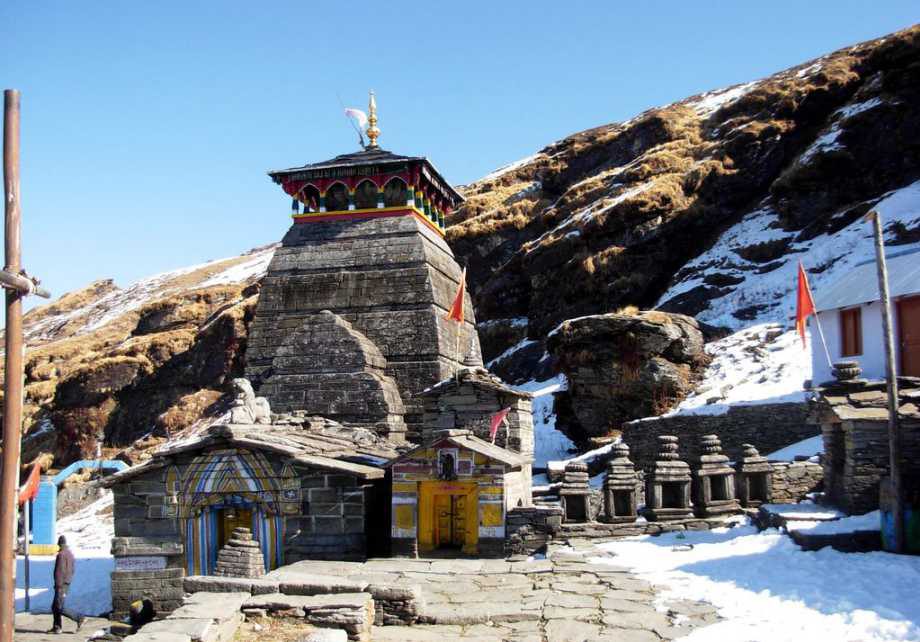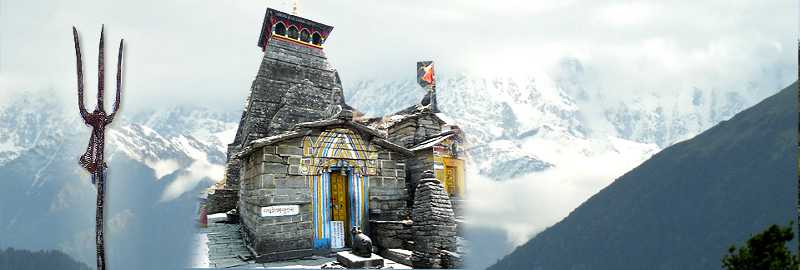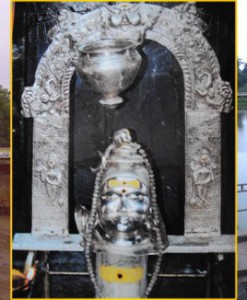No products in the cart.
Tungnath Temple, Uttarakhand
Tungnath is the highest Shiva temple in the world and is one of the five and the highest Panch Kedar temples located in the mountain range of Tungnath in Rudraprayag district, in the Indian state of Uttarakhand. The Tungnath (literal meaning: Lord of the peaks) mountains forms the Valleys of Mandakini and Alaknanda rivers. Located at an altitude of 3,680 m (12,073 ft), and just below the peak of Chandrashila, Tungnath temple is the highest Hindu shrine dedicated to Lord Shiva. The temple is believed to be 1000 years old and is the second in the pecking order of the Panch Kedar.
It is an ancient temple built in the North Indian style of temple architecture. It is small in size and can barely accommodate ten people in the sanctum. Surrounding this temple, there are a number of small shrines (about a dozen) of several gods. The sanctum part of the temple abuts the hills where the sacred standing black rock (swayambu or self manifest linga) with tilt to the left, of 1 ft (0.3 m) height, denoting the form of arms of Lord Shiva is worshipped. The construction of this temple is credited to Arjuna, the third of the Pandava brothers, who also worshiped here.
The temples inside the enclosure are made of stones with decorations painted on the outside and they depict tall towers. The highest dome has a wooden stage at the top. The dome has sixteen openings (pictured). The temple roofs are also made of stone slabs. At the entrance to the temple there is a Nandi stone image facing towards the sanctum where Shiva’s idol is deified. The Nandi’s flank is normally sanctified for worship with flowers and with three lines (tripundra) in yellow clay, with a mark denoting Shiva’s third eye, which is symbolic to Shiva’s devotees. At the right of the temple entrance there is the mandatory image of Ganesha. In the main sanctum, ashtadhatu (made of eight metals) idols of sage Vyas and Kala Bhairav (demi-god), disciples of Shiva, are also installed in the sanctum sanctorum. The temple also houses the images of the Pandavas and silver plaques of other four Kedar shrines.
Among the smaller shrines, the central temple is of goddess Parvati, Shiva’s consort. Away to the far right there is a group of five small shrines dedicated to the Panch Kedar, which include Tungnath also as one of the Panch Kedar, in addition to the main Tunganath temple.
Just at the entrance, at the end of the trek path to the temple, there is a gateway with name Tungnath painted on the top of the arch, which is of recent construction. A signage at the gate entrance gives distance to the temple as 4 km and also states that pilgrims unable to undertake the trek could leave their donations in the box (kept next to the gate).
There is a legend associated with the Tungnath Temple. It is believed that after killing their cousins in the Kurukshetra war, Pandavas started their journey to visit Lord Shiva to wash their sins away. Lord Shiva wanted to avoid them as he was deeply incensed by the death and dishonesty in the Kurukshetra war. Therefore, he disguised himself in the form of a bull, Nandi and disappeared into the ground with different parts of the body appearing at various places. His hump appeared at Kedarnath, his bahu (arm) was spotted at Tungnath, his head surfaced at Rudranath, the stomach and navels were traced at Madhyamaheswar and his jata (tress) was divined at Kalpeshwar. Pandvas built a temple at this place to worship Lord Shiva and to please him.
Since Shiva’s arms were fallen of here at Tungnath, another meaning of Tungnath is derived from the word ‘Tung’ meaning – arms, and ‘Nath’ representing Lord Shiva.
The major festivals here are Basant Panchami, Dussehra and Diwali that are celebrated with great pomp and show.
Special Rituals performed in temple
The priest at this temple is a local Brahmin from Maku village, unlike the other Kedar temples where the priests are from South India, a tradition set by the eighth century Hindu seer Sankaracharya. It is also said that the Khasi Brahmins officiate as priests at this temple.
Opening and Closing of the Temple
During the winter season, the temple is closed and the symbolic image of the deity and the temple priests are moved to Mukunath, which is 19 km from here. It is near Duggalbitha (10 km) before Chopta towards Ukhimath.
Temple Daily Schedule
The temple remains open from 6:00 am to 7:00 pm.
By Air
Nearest airport is Jolly Grant, Bhaniawala, Dehradun, 41 KMs from Haridwar. After reaching Haridwar devotees need to carry rest of the journey by road only.
By Rail
Nearest railway station is at Haridwar. After reaching Haridwar devotees need to carry rest of the journey by road only.
By Road
Below is the route that needs to be followed to reach Deoria Tal from Delhi –
Delhi – Haridwar (212 KMs) – Rishikesh – Dev Prayag – Srinagar – Rudra Prayag (take left towards Kedarnath) – Agustmuni – Syal Saur – Kund – Ukhimath – Duggalbitta – Baniya Kund – Chopta (448 KMs) – Tungnath .
Vehicles can go up to Chopta only and devotees need to trek about 3.5 KMs from Chopta to reach Tungnath.
Tungnath Temple, Uttarakhand










